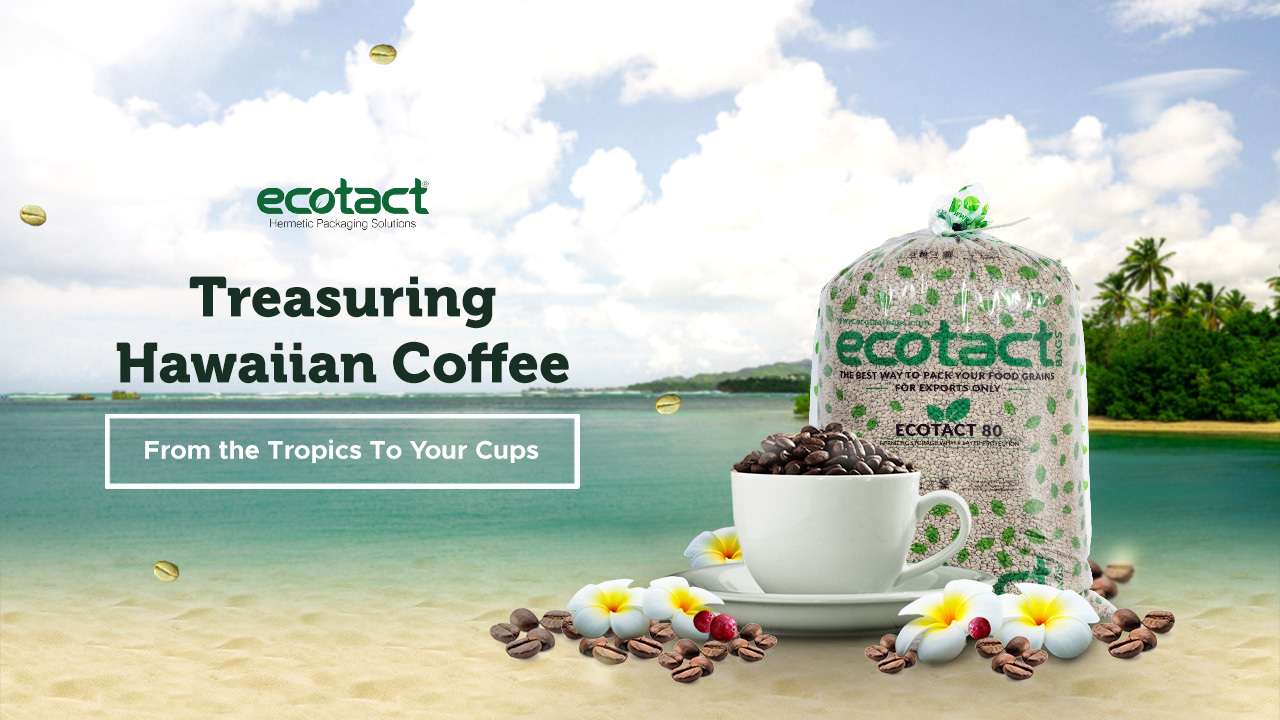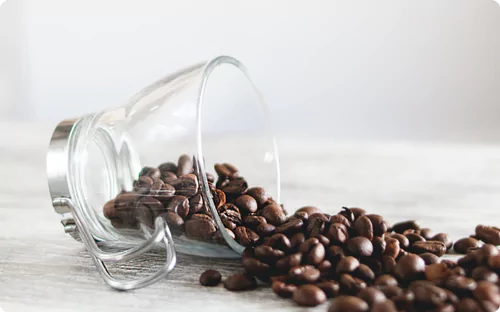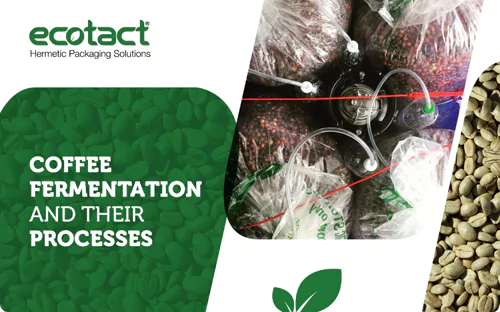Origin of the Hawaiian coffee beans
Hawaiian coffee has a captivating and mystical origin that intertwines with the islands' rich history and lush landscapes. Delving into the past reveals a story that speaks of intrigue, daring voyages, and the perfect harmony between nature and nurture. In the 1820s, coffee was introduced to Hawaii from Brazil. Although the initial plantings in Manoa Valley on Oahu were not successful, coffee found its way to the Big Island by 1828 and was first cultivated in the Hilo area. In the same year, Reverend Samuel Ruggles took seedlings from there and planted the first coffee trees in the Kona region, situated on the volcanic slopes of the Big Island's west side. The coffee grown in Kona gained significant acclaim, marking the birth of what we now know as Kona coffee.
In the enchanting region of Kona, Hawaii, a remarkable coffee belt stretches across a strip of land approximately 30 miles long and 2 miles wide. Here, amidst the breathtaking landscapes, you'll find a staggering 900 coffee farms cultivating their coffee beans. Spanning a total of 3,800 acres, these farms work tirelessly to produce an astounding 20,000 million pounds of coffee cherry each year. But Kona isn't the only coffee haven in Hawaii, as the neighboring Ka'u region boasts 800 coffee farms of its own. In this captivating area, these farms collectively yield an impressive 4.8 million pounds of coffee cherry, showcasing the passion and dedication of Hawaiian coffee growers.
Where does Hawaiian coffee flourish?
The ideal conditions for cultivating coffee trees encompass cool to warm tropical climates, nutrient-rich soils, and a scarcity of pests and diseases. This prime environment can be found around the globe within a belt known as "The Bean Belt," which spans along the equator between latitudes 25 degrees North and 30 degrees South. The Coffee Belt stretches across various continents, including North, Central, and South America, the Caribbean, Africa, the Middle East, and Asia. Within this expansive zone, coffee trees thrive, yielding the beans that bring joy to countless coffee enthusiasts worldwide. Even the volcanic soils and tropical microclimates offer the perfect environment for growing specialty coffee.
Hawaii is primarily comprised of 8 mainland islands, but only 5 out of these produce coffee: Hawaii, Oahu, Maui, Kauai, Molokai, and Lanai.
From Catuai to Caturrra, Hawaiian has 6 most popularly grown coffee varieties
Catuai
Hailing amidst the aromatic and earthy, Catuai, an organic hybrid born from the marriage of Mundo Novo and Yellow Caturra Arabica variations, has become a rising star in the coffee world. With accolades and awards adorning its name, this splendid brew has won hearts globally and earned Brazil's prestigious Cup of Excellence twice in a row. Introduced to Guatemala in 1970, Catuai now claims a significant 20% share of the country's coffee production, boasting two delightful varieties: Yellow, offering a clean and gentle body, and Red, embracing a fuller, more complex essence.
No matter the hue, Catuai promises a tantalizing cup brimming with flavors like caramel, brown sugar, honey, almonds, and nutmeg. This exclusive gem is lovingly nurtured on the captivating island of Molokai and also thrives on the volcanic slopes of Maui, Kauai, and the Big Island. Each sip invites a unique experience, an ode to the artistry of coffee crafted with love and precision.
Caturra
Renowned for its smooth and velvety texture, Caturra, a natural mutation of Arabica known as Bourbon, was originally found in Brazil during the early 20th century. Its journey to the Hawaiian Islands began when it was sent to Kona from El Salvador. Flourishing in the hot and arid climates of Hawaii, Caturra stands out with its vibrant flavor and gentle acidity, crafting a mild yet delightful cup with fruity aromas and refreshing hints.
Mokka
Mokka coffee, one of the four cultivars thriving on Maui, traces its roots to the 15th-century Yemeni port of Mokha, where the coffee trade flourished. Derived from the Mokka tree, known for its small, bushy form and tiny cherries, this delightful brew lives up to its name, often referred to as "the champagne of coffees" by Hawaii's primary supplier. The first plantings of Mokka coffee occurred near the Kailua-Kona district on the Big Island, approximately ten miles away. As coffee's popularity spread to Europe, the association between chocolate and coffee from the Mokha region birthed the term "mocha" as we know it today.
Mundo Novo
Mundo Novo coffee, a delightful outcome of nature's fusion between Bourbon and Typica, earned its name from the Brazilian region of its origin. This unique varietal hails from a taller coffee tree, boasting exceptional resistance against pests and strong winds. A true gem among its cherry-bearing counterparts, Mundo Novo thrives with its distinct characteristics, captivating coffee enthusiasts worldwide. Mundo Novo's resilience is mirrored in its robust and diverse flavor profile, ranging from bold and nutty to woody and strong. With low acidity and a delightful finish, this exceptional brew is available at both specialty and commercial farms across Hawaii.
Typica
Kona coffee, the renowned brew that catapulted Hawaii onto the global coffee scene, is rooted in tradition as a high-quality sub-variety of Arabica called Typica. Originating from Ethiopia, the homeland of Arabica, Typica is celebrated for its inherent sweetness and exceptional cupping qualities. Distinctive in size, with trees reaching up to 16.5 feet, this sought-after variety commands a premium price, offering a light, sweet, and fruity cup with delightful hints of nuts and spices.
Kauai Blue Mountain
Derived from Jamaica Blue Mountain coffee, one of the world's most expensive and prestigious coffees, Kauai Blue Mountain coffee found its beginnings in 1990. Seeds from the University of Hawaii were planted in collaboration with the Hawaii Agriculture Research Center at Kauai Coffee, the largest coffee estate in the United States. Acquiring its name from Jamaica's Blue Mountains, where it originated, the varietal thrived in Kauai's high altitudes and volcanic soil. Today, Kauai Blue Mountain ranks among the most beloved coffees grown in Hawaii, cherished for its bright, fruity, and floral flavor.
Puna Coffee
Puna Coffee delights with its wonderfully nutty and occasionally chocolate-infused taste, with a bold chocolatey reminiscence of a delightful mocha. Cultivated in mineral-rich volcanic soils between two National Parks, it delivers a robust and full-bodied experience. Abundant at farmers' markets across Hawaii, this coffee is a local favorite, cherished by residents who can't resist its allure.
Hawaiian coffee tastes just as delicious as it sounds as it comes from one of the finest harvests in the world. While it is essential to manage packaging for coffee beans, we at Ecotact, ensure that every bean of this coffee is protected with hermetically sealed bags. These eco-friendly coffee bags ensure that every bean is truly remarkable and offers something special to every coffee enthusiast. Each varietal is unique and special in its own way, from the rich and smooth flavor of Kona coffee to the bright and fruity notes of Ka’u coffee to the bold and chocolatey taste of Puna coffee. It is a testament to the passion and dedication of Hawaiian coffee farmers who cultivate the beans with great care while also preserving the land for future generations.
 English
English
 Spanish
Spanish French
French


